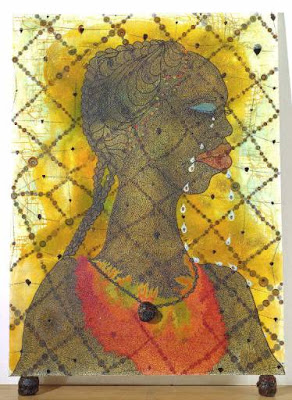"I lived in Peckham for the first 12 years of my life and then my mum and dad decided they really didn't want to bring up their children there. So they saved up money and bought a house in Plumstead, semi-detached, three bedrooms. I remember going into it the first day and the first place I ran into was the back garden. I was saying, 'Oh shit, we have a back garden!'"
His most recent single, Invincible, features some film of him returning to his old school in Abbey Wood (SE2): St Paul's R.C. Secondary School, now known as St.Pauls Academy. On Radio One on Boxing Day he highlighted his visit to the school as one of his best moments of the year, mentioning that they now have a Tinie Tempah Music Studio. He went on to study A Levels at St Francis Xavier Sixth Form College in Balham (SW12).
Earlier this year he was asked to respond to the Chris Ofili exhibition at Tate Britain, and he chose Ofili's painting No Woman No Cry - a tribute to Stephen Lawrence, who as Tinie Tempah mentions, was murdered in 1993 not far from where he lived (Lawrence also grew up in Plumstead).
Tinie Tempah performed a piece at the gallery reflecting on the painting, the murder ('RIP to Stephen Lawrence') and on his connection with Ofili (they are both from Nigerian backgrounds):
According to the Tate website: 'No Woman No Cry is a tribute to the London teenager Stephen Lawrence. The Metropolitan police investigation into his racially motivated murder was mishandled, and a subsequent inquiry described the police force as institutionally racist. In each of the tears shed by the woman in the painting is a collaged image of Stephen Lawrence’s face, while the words ‘R.I.P. Stephen Lawrence’ are just discernible beneath the layers of paint. Despite these specific references, the artist also intended the painting to be read in more general terms, as a universal portrayal of melancholy and grief'.




















No comments:
Post a Comment